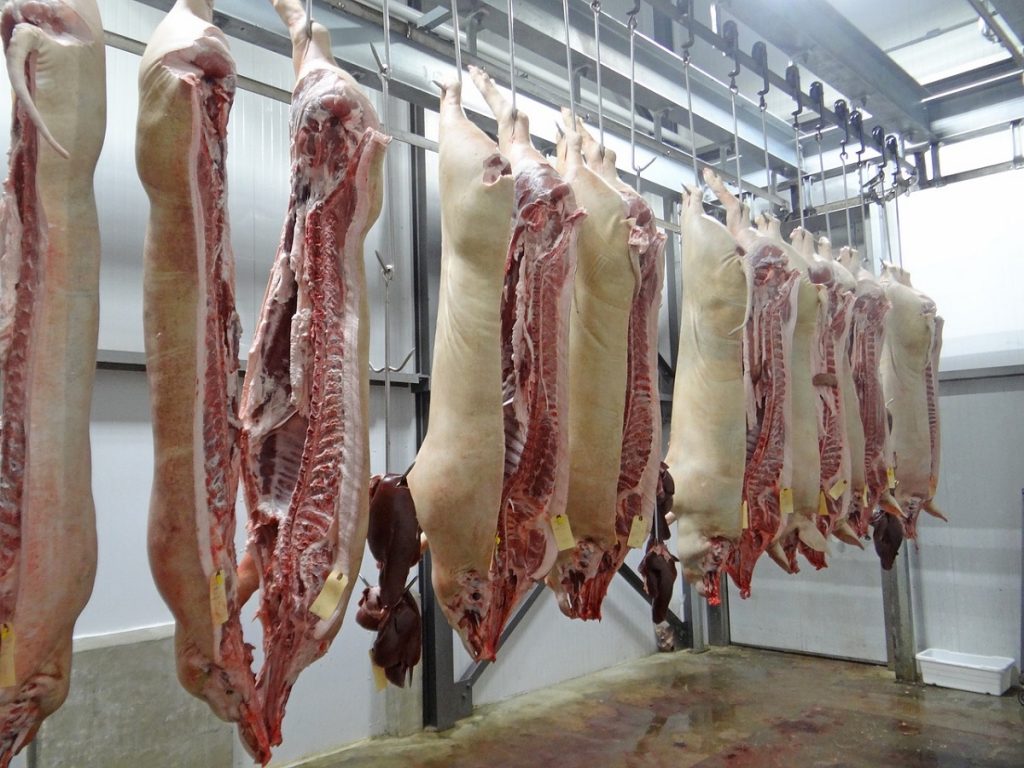‘[He calls] it an abattoir. He likes that word better – I guess he’s no longer so fond of reality and the French makes things all far away and safe.” – Anne M. Pillsworth, “The Madonna of the Abattoir”
The word “abattoir” is a sanitised way to say “slaughterhouse”. But it doesn’t matter what word someone uses to refer to it, slaughter is what happens inside its walls. Even the New South Wales Environment Protection Agency refers to the major activity of one of these buildings as the “slaughter and carcass dressing of animals“. According to the agency, the other activities that occur in a slaughterhouse include keeping the carcasses of animals frozen and drying the animals’ skins.
Death is a by-product of a slaughterhouse. Another by-product of a slaughterhouse is liquid wastes.
Where the Red Rivers Flow
To protect consumers’ health, Australian slaughterhouses use large amounts of fresh water and chemicals to clean the meat and facilities. This industrial wastewater undergoes treatment before safe disposal.
But what happens to the vast quantities of blood, the other by-product of an abattoir?
After the blood flows down the drains of the killing floor, it’s collected in giant tanks. This crimson harvest is stored for only a short period to prevent terrible smells from developing. Specialised facilities and treatment plants come and take the blood away for processing.
Companies use the blood to make a variety of products that can benefit from its nourishing components. Food producers can use it to make blood sausage, or black pudding, which they sell to markets for human consumption. Chemicals in the blood make their way into cookies to provide iron fortification and into cakes to replace egg whites. Agricultural businesses will turn a lot of it into “blood meal”, a kind of animal fodder that also doubles as an ingredient for plant fertiliser.
Blood is a life-giving substance, even after slaughterhouses have harvested it from the vein. Animal blood is also an integral component of a lot of medical products. Cow’s blood contains bovine thrombin that can help with wound treatments; it can also attach skin grafts and it is a coagulant.
Waste Not, Want Not

Other parts of animals that aren’t meat also have uses in different industrial sectors. Pet food companies collect solid parts, such as hair, beaks and feathers, and use them as ingredients. Gelatin comes from a soup of the bones, tendons and ligaments and is a component of candied jellies.
The cosmetic industry also takes its pick from the refuse. They use gelatin to make products, such as shampoos. Animal hooves and feathers contain keratin, another ingredient of shampoo but also of lotions and body scrubs. They render tallow from the fat to make creamy make-up and satiny lipsticks.
Blood is the substance of life. It flows in the veins of animals and people alike. Through innovations in chemistry and engineering, the blood that slaughterhouses shed no longer goes down the drains. Instead, it can flow once more, bringing life to every level of the food chain, from plants to animals to humans. And through this life becomes another by-product of the abattoir.







